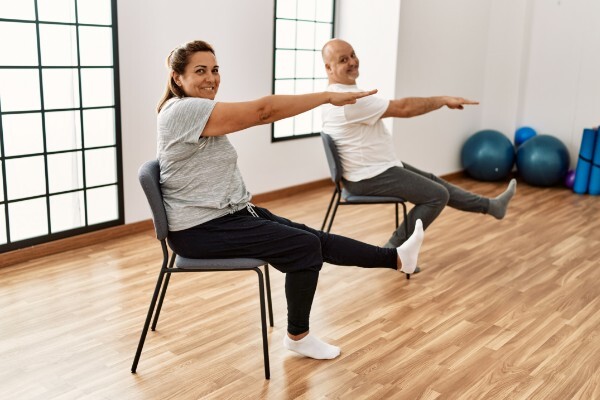If you’re new to strength training, stepping into the free weight section of the YMCA of Greater Whittier can feel a little intimidating. Dumbbells, barbells, squat racks, benches—there’s a lot to take in. But with the right guidance and mindset, the weight room becomes a powerful space for building strength, confidence, and long-term fitness success. Here’s a guide to help you get started safely and effectively.
1. Choose the Right Starting Weight
One of the most common beginner mistakes is choosing a weight that’s too heavy—or occasionally, too light. As a general rule, pick a weight that allows you to perform 8 to 12 repetitions with good form. The last two reps should feel challenging but manageable. If you breeze through a set without effort, go heavier. If you’re straining to finish the first few reps, go lighter.
Start with dumbbells before progressing to barbells. Dumbbells engage stabilizing muscles and are easier to control, reducing injury risk. YMCA staff or certified trainers are available to help you find the appropriate weights and walk you through safe technique.
2. Focus on Form First
Before you think about lifting heavier, prioritize proper posture and technique. Every exercise has a correct movement pattern that ensures the right muscles are engaged while protecting your joints and spine.
For example:
-
In squats: Keep your chest up, knees aligned with your toes, and avoid rounding your back.
-
In overhead presses: Engage your core, keep a neutral spine, and avoid arching your lower back.
-
For rows: Keep your shoulders retracted and avoid pulling with momentum.
If you’re unsure, ask a YMCA staff member to observe your form or consider joining a beginner strength class. Some group fitness sessions, like Silver Strength & Stamina, also teach fundamentals in a structured, low-pressure environment.
3. Incorporate a Balanced Routine
Avoid focusing only on one area (like arms or abs). A well-rounded strength program works all major muscle groups: legs, back, chest, shoulders, arms, and core. Train each muscle group 1–2 times per week, allowing at least 48 hours of rest before repeating the same movement.
Here’s a simple example:
-
Day 1: Upper Body (push & pull)
-
Day 2: Lower Body & Core
-
Day 3: Active recovery or flexibility (e.g., yoga or Tai Chi)
-
Day 4: Total body strength
-
Day 5: Cardio or sports (e.g., basketball, pickleball)
This kind of variation keeps your workouts fresh, prevents overuse injuries, and supports overall functional strength.
4. Don’t Forget Breathing and Recovery
Breathing properly during strength training is critical. Exhale during the exertion phase (e.g., pushing or lifting), and inhale during the return phase (e.g., lowering the weight). Holding your breath can spike blood pressure and reduce performance.
Recovery is just as important as the workout itself. The YMCA provides stretching zones and foam rollers to help you cool down and recover post-workout. Consider pairing strength days with flexibility classes like Tai Chi or yoga to improve mobility and prevent stiffness.
Strength training with free weights is one of the most effective ways to build muscle, boost metabolism, and increase overall health. At the YMCA of Greater Whittier, you have access to everything you need—equipment, guidance, and supportive community—to lift with confidence and purpose. Start light, focus on form, and build your routine gradually. Before you know it, the weight room will become your favorite space to grow stronger—inside and out.



